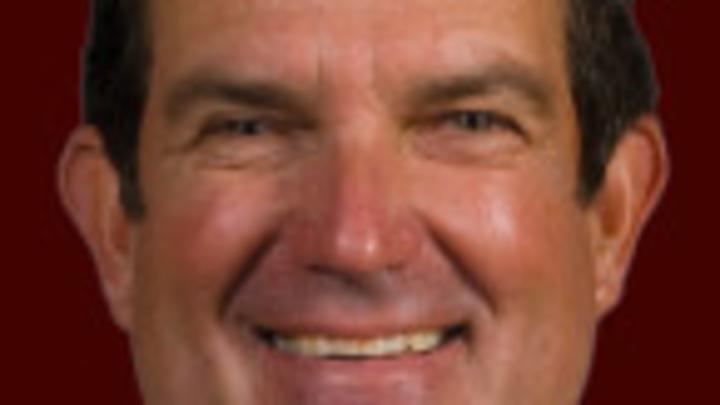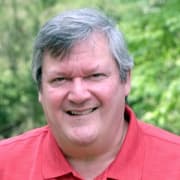Lietzke, 67, loved off-season, not practice

There is a popular saying in golf that if you’re not getting better, you’re getting worse. No doubt that maxim has motivated players throughout history – shag bags to launch monitors – to practice hard in pursuit of improvement. But Bruce Lietzke was an exception to the rule, a happy, successful outlier who did it his way.

“I don’t want my swing to get better,” Lietzke told Golf World as he turned 50 in 2001. “I want it exactly like it was yesterday.”
I once wrote that Lietzke much preferred to tinker with his muscle cars instead of his golf muscles, which rarely required a tuneup and weren’t harmed by long layoffs. Although he played a busy calendar of tournaments early in his career, Lietzke subsequently made the most of a light playing schedule.
“Nobody enjoys the off-season more than me,” Lietzke told the Chicago Tribune in 1994. “November and December are like holy months to me.”
Diagnosed with brain cancer in April 2017, Lietzke died Saturday at his home in Athens, Texas. He was 67. Lietzke is survived by his wife, Rose, and their children, Stephen and Christine. Lietzke leaves behind not only the legacy of his amazingly low-maintenance skills that carried him to 13 victories on the PGA Tour and seven titles on the Champions Tour, including the 2003 U.S. Senior Open, but a reputation as one of the most decent people in golf, a person who put family far ahead of fame. Lietzke loved “The Andy Griffith Show,” and he related easily to the kind sheriff’s goodness.
More comfortable at Steak ’n Shake than Ruth’s Chris, Lietzke figured out what worked for him when it came to his golf and his goals.
Originally a self-discovered solution for hitting the ball lower in the wind on Florida mini-tours before becoming a PGA Tour rookie in 1975, Lietzke played a reliable fade that became his ticket to success and resulted in a nickname, “Leaky.” Having grown up in Beaumont, Texas, hitting high draws, Lietzke crafted a new over-the-top action that made him an exclusively left-to-right ball-striker, with rare exceptions.
When he won the Senior Open at Inverness Club in Toledo, Ohio, turning back Tom Watson, Lietzke reveled in the fact that he executed two hooks en route to victory. A 5-iron draw set up an eagle on No. 8, and a big right-to-left 7-iron out of trouble on No. 14 helped him to a pivotal par. Lietzke surmised that he had hit fewer than a dozen hooks since revising his swing in 1974, most of those on the dogleg-left third hole at Colonial Country Club in Fort Worth, Texas.
Lietzke’s fade was a repeatable wonder. I remember photographing Lietzke’s driver swing with a high-speed camera on an empty hole at Doral nearly 30 years ago. When we drove down the fairway to collect the half-dozen balls, you could have covered them with a couple of blankets, so tight was the dispersion.
His consistent ball-striking would have seemed to be a good fit with major championships, but Lietzke didn’t covet them the way many golfers do. “It seems to mean more to other guys,” he said. “To me, it is another tournament on my schedule.”
He played in 11 U.S. Opens, his best a tie for 17th in 1981 at Merion Golf Club, and had his best major finish as runner-up to John Daly in the 1991 PGA Championship at Crooked Stick. Lietzke ventured overseas for the British Open only three times, tying for sixth in 1981 when his buddy Bill Rogers won at Royal St. George’s. After Rogers’ play deteriorated in the post-major victory whirlwind, Lietzke saw it as a cautionary tale.
“I’ve seen what happens to people who win majors,” Lietzke said years later, “and I’ve always liked to stay low on the radar screen. It really brought Bill down.”
Lietzke got more excited about the Ryder Cup, and he qualified for the 1981 U.S. team that is regarded as one of the juggernaut squads.
If anyone believed Lietzke overstated how he put his clubs away at the end of one season and didn’t touch them until the start of the next, they learned it was gospel early in 1986. Al Hansen, Lietzke’s caddie, really learned.
When Lietzke completed his 1985 schedule with a tie for fourth at the B.C. Open in September, Hansen doubted that Lietzke truly was going to set his clubs in the garage for months. He put a banana inside the headcover of his boss’ driver. At Lietzke’s first event in 1986, the Bob Hope Chrysler Classic in January, the caddie found the banana right where he had left it. After discovering the rotten, smelly mess, he never doubted Lietzke again.
If Lietzke had any second thoughts about drastically cutting back his schedule, they were eased by a conversation he had with Byron Nelson, who left the pinnacle of golf for his ranch when he was in his mid-30s.
“He was one of my very favorite people in golf,” Lietzke recalled in 2011. “When I was wanting to start cutting back, I said, ‘Did you ever regret walking away from the game and retiring at an early age?’ He had the most beautiful blue eyes you can imagine, and boy there was no hesitation. He looked right back at me and said, ‘I never regretted it for a minute.’ Boy that sent chills, because that’s what I wanted him to say.”
A dozen years ago, Bruce and Rose Lietzke left their suburban Dallas home for 630 acres about 70 miles southeast of the big city, where there were wild hogs and whopper bass but not a golf hole, even though there was plenty of room. As ever, golf was what Lietzke did, not who he was.
Bill Fields has covered golf since the mid-1980s, with much of his career spent at Golf World magazine as a writer and editor. A native North Carolinian, he lives in Fairfield, Conn. Email: williamhfields@gmail.com; Twitter: @BillFields1
